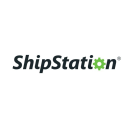How We Started A $150K/Month Original Designs Apparel And Accessories Brand
Hello! Who are you and what business did you start?
We are Matt Snow and Meredith Erin, and we’re the co-founders of Boredwalk, a lifestyle brand that sells original art and graphic design on functional goods.
While we mostly print and sell our art on casual apparel, we also offer accessories and decor products and are always working on new designs and products to delight our customers. Speaking of customers, ours are primarily 25-55 years old and interested in art, music, animals, mental health, progressive politics, feminism, existentialism, nihilism, monster movies, and Satan. So essentially a reflection of ourselves.
We’ve been growing fairly rapidly, especially in the last 2-3 years as we’ve become more adept at digital marketing to find and retain our ideal customers, averaging MoM growth of 10-12% and YoY growth of 50-100%.


Download the report and join our email newsletter packed with business ideas and money-making opportunities, backed by real-life case studies.

Download the report and join our email newsletter packed with business ideas and money-making opportunities, backed by real-life case studies.

Download the report and join our email newsletter packed with business ideas and money-making opportunities, backed by real-life case studies.

Download the report and join our email newsletter packed with business ideas and money-making opportunities, backed by real-life case studies.

Download the report and join our email newsletter packed with business ideas and money-making opportunities, backed by real-life case studies.

Download the report and join our email newsletter packed with business ideas and money-making opportunities, backed by real-life case studies.

Download the report and join our email newsletter packed with business ideas and money-making opportunities, backed by real-life case studies.

Download the report and join our email newsletter packed with business ideas and money-making opportunities, backed by real-life case studies.





















